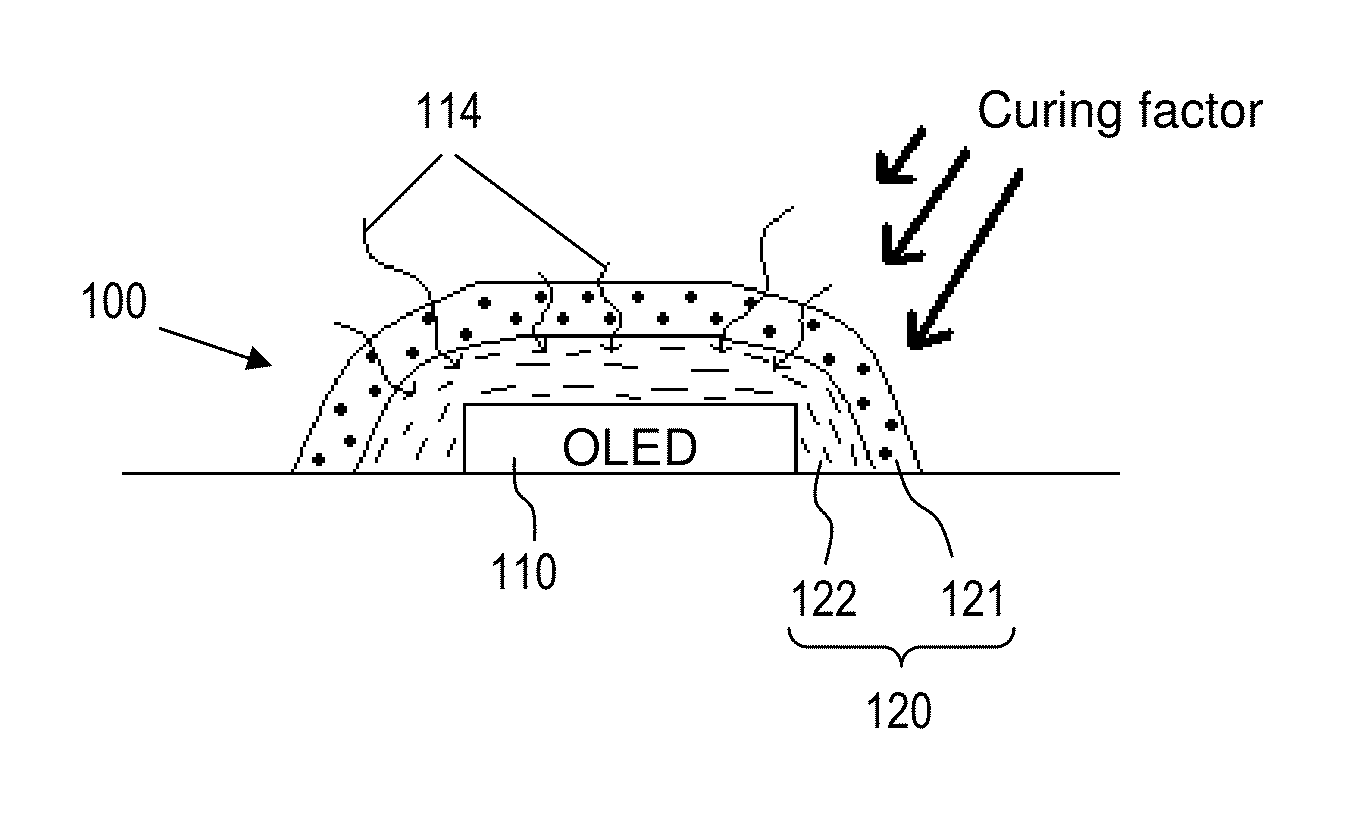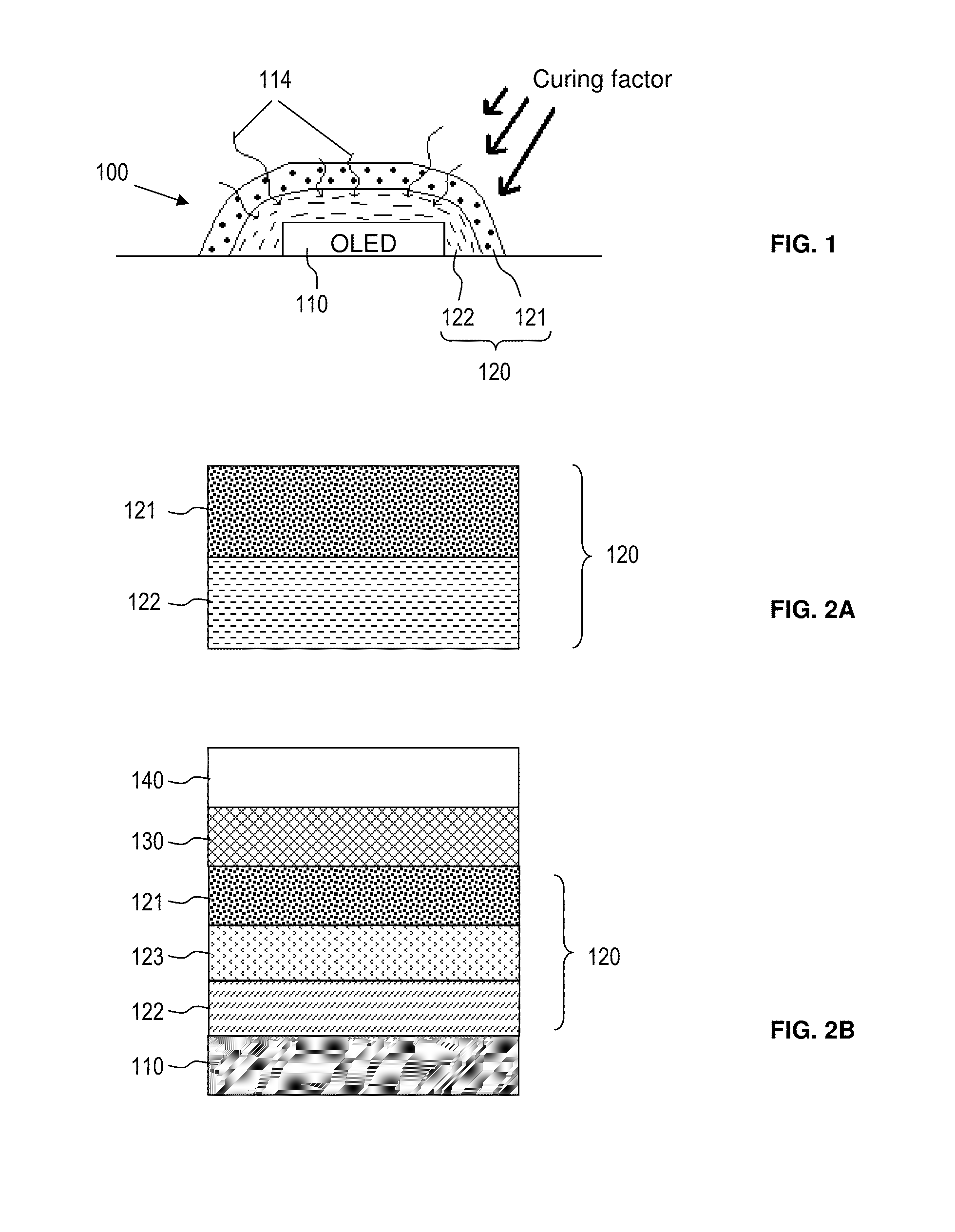Multilayer film for encapsulating oxygen and/or moisture sensitive electronic devices
a technology of oxygen and/or moisture-sensitive electronic devices, applied in the field of encapsulation technology, can solve the problems of destroying the transparency of the barrier substrate, affecting the performance of the electronic device, and the curing process is likely to damage the organic el layers
- Summary
- Abstract
- Description
- Claims
- Application Information
AI Technical Summary
Benefits of technology
Problems solved by technology
Method used
Image
Examples
example 1
Fabrication of an Encapsulated OLED
1. Surface Preparation of Substrates
[0094]Silicon oxide coated soda-lime glass substrates (display-quality glass) were cut into 50 mm×50 mm pieces and also any required sizes for use as a base or cover for the OLEDs. The pneumatically operated hollow die punch-cutting equipment or any conventional slitting machine could be used to slice the samples into the specified or required dimensions.
[0095]The water vapor permeation in the present encapsulation package may be mainly through the interface of the adhesive and substrate and also diffusion through adhesive sealing. The suitable surface pre-treatment process such as plasma treatment can eliminate the adhesion issues. Accordingly, they are rinsed with isopropyl alcohol (IPA) and blow-dried with nitrogen. These processes help to remove macro scale adsorbed particles on the surface. Acetone and methanol cleaning or rinsing is not recommended. After nitrogen blow-dry, the substrates are placed in the ...
example 2
Encapsulation Vacuum Transfer Technique
[0107]The fabrication of the barrier film and the subsequent device encapsulation will be illustrated in the following for highly moisture or oxygen sensitive (up to a water permeation rate of 10−6 g / m2 / day level), organic devices fabricated on to rigid or plastic substrates, using either an on batch or roll to roll process:[0108]1. Device 110—Organic Light Emitting Diode[0109]2. Solvent protection layer—High refractive index solvent protection optical film (optional)[0110]3. Neutralizing layer—Titanium oxide / Zinc Oxide rod structured acrylic polymer[0111]4. Nanostructured layer—Reactive nanoparticles (other than titanium oxide or zinc oxide, respectively) dispersed in acrylic polymer[0112]5. Cover substrate—Barrier Plastic substrate / glass substrate
[0113]The device with the multi-layer barrier film of the invention that includes layers 3 and 4 will be adopted if cover substrates are fabricated on to plain plastic substrates. The solvent protect...
PUM
| Property | Measurement | Unit |
|---|---|---|
| particle sizes | aaaaa | aaaaa |
| particle sizes | aaaaa | aaaaa |
| length | aaaaa | aaaaa |
Abstract
Description
Claims
Application Information
 Login to View More
Login to View More - R&D
- Intellectual Property
- Life Sciences
- Materials
- Tech Scout
- Unparalleled Data Quality
- Higher Quality Content
- 60% Fewer Hallucinations
Browse by: Latest US Patents, China's latest patents, Technical Efficacy Thesaurus, Application Domain, Technology Topic, Popular Technical Reports.
© 2025 PatSnap. All rights reserved.Legal|Privacy policy|Modern Slavery Act Transparency Statement|Sitemap|About US| Contact US: help@patsnap.com



